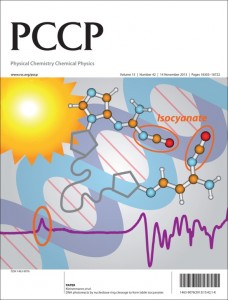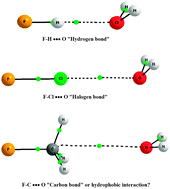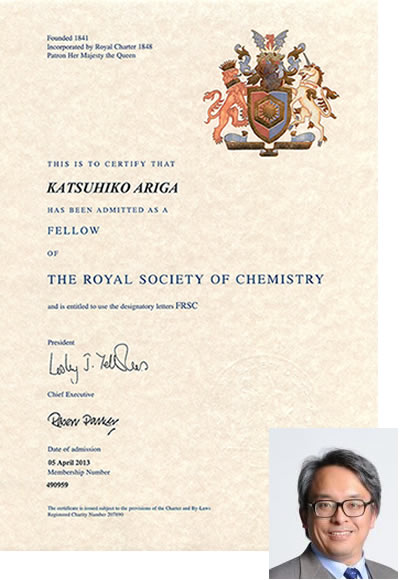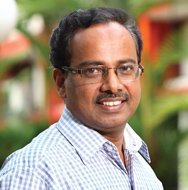 Professor Mattanjah de Vries, University of California Santa Barbara, USA, has picked his favourite articles in the area of molecular dynamics published in Physical Chemistry Chemical Physics (PCCP) in 2012 and 2013.
Professor Mattanjah de Vries, University of California Santa Barbara, USA, has picked his favourite articles in the area of molecular dynamics published in Physical Chemistry Chemical Physics (PCCP) in 2012 and 2013.
Read Prof. de Vries’ Editor’s choice selection for free for a limited period by clicking on the links below.
Prof. de Vries is on the PCCP Advisory Board. His research group in California combine a number of advanced physical chemistry techniques for a novel approach to the study of complex molecules, isolated biomolecules and clusters, and surfaces.

On behalf of the Editorial Board we invite you to submit your best work to PCCP.
Why publish in PCCP?
- Committed to publishing the best research across physical chemistry, chemical physics and biophysical chemistry
- Not-for-profit publication published by the Royal Society of Chemistry
- A Society journal and is co-owned by 18 national chemical societies
- Large community-spanning international readership
- Efficient, rigorous and fair peer review procedure
- High impact factor: 3.83
- No author page charges or colour charges
Mattanjah de Vries Editor’s Choice…
Perspectives
FREE: On the nature and signatures of the solvated electron in water
B. Abel, U. Buck, A. L. Sobolewski and W. Domcke
DOI: 10.1039/C1CP21803D
FREE: Probing structural evolution along multidimensional reaction coordinates with femtosecond stimulated Raman spectroscopy
Renee R. Frontiera, Chong Fang, Jyotishman Dasgupta and Richard A. Mathies
DOI: 10.1039/C1CP22767J
Original research articles
FREE: Ultrafast nonradiative decay by hypoxanthine and several methylxanthines in aqueous and acetonitrile solution
Jinquan Chen and Bern Kohler
DOI: 10.1039/C2CP41296A
FREE: Unraveling the internal dynamics of the benzene dimer: a combined theoretical and microwave spectroscopy study
Melanie Schnell, Undine Erlekam, P. R. Bunker, Gert von Helden, Jens-Uwe Grabow, Gerard Meijer and Ad van der Avoird
DOI: 10.1039/C3CP51181B
FREE: Ultrafast spectroscopy with sub-10 fs deep-ultraviolet pulses
Takayoshi Kobayashi and Yuichiro Kida
DOI: 10.1039/C2CP23649D
FREE: Ultrafast vibrational energy relaxation of the water bridge
Lukasz Piatkowski, Adam D. Wexler, Elmar C. Fuchs, Hinco Schoenmaker and Huib J. Bakker
DOI: 10.1039/C1CP22358E
FREE: The spectroscopic ruler revisited at 77 K
Verena Hirschfeld, Hauke Paulsen and Christian G. Hübner
DOI: 10.1039/C3CP51106E, Paper
FREE: Time-resolved vibrational spectroscopy of a molecular shuttle
Matthijs R. Panman, Pavol Bodis, Danny J. Shaw, Bert H. Bakker, Arthur C. Newton, Euan R. Kay, David A. Leigh, Wybren Jan Buma, Albert M. Brouwer and Sander Woutersen
DOI: 10.1039/C1CP22146A
You might also be interested in these recent PCCP Themed Issues:
Spectroscopy and dynamics of medium-sized molecules and clusters
Guest edited by Majdi Hochlaf, David Lauvergnat and Roberto Linguerri.
Ultrafast chemical dynamics
Guest Edited by Klaas Wynne and Neil T. Hunt.
Keep up to date with our latest news: sign up to our e-alert, and follow us on twitter and facebook.














 We are saddened by the news that
We are saddened by the news that 



![clip_image002[1] Photograph of Gaoquan Shi](https://blogs.rsc.org/cp/files/2012/12/clip_image0021-235x300.jpg)

 We are delighted to announce that
We are delighted to announce that